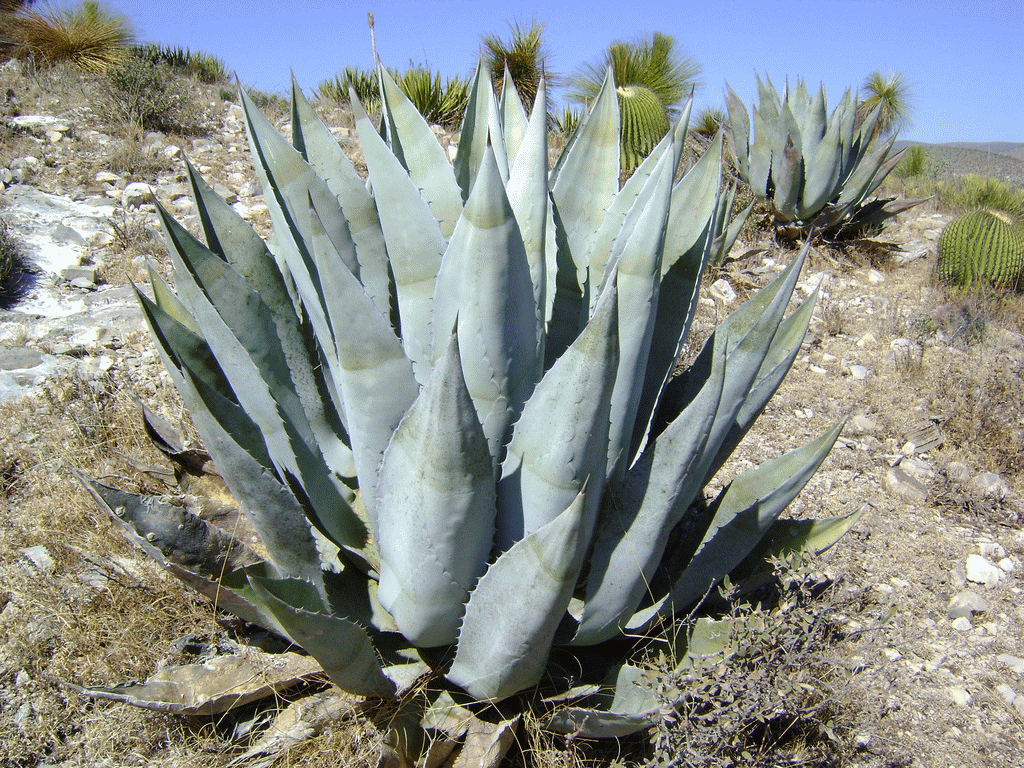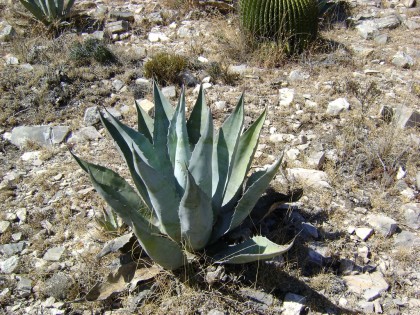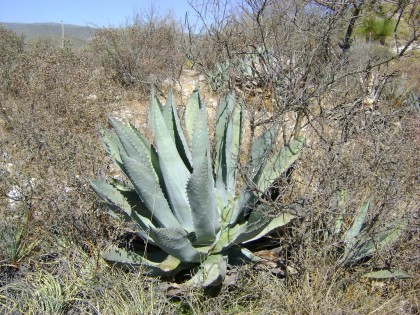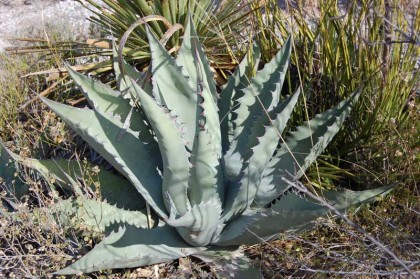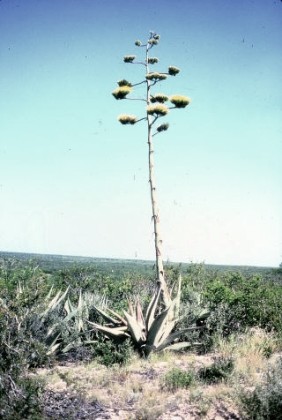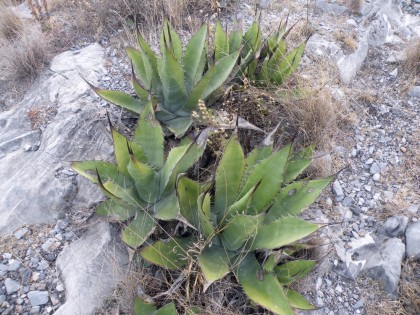(Photograph = Agave scabra, Amante Darmanin)
Introduction
Agaves are desert plants of North America. Plants are small (Agave parviflora) and just a few inches across, or they are large (A. americana) and can be 8-ft tall. Their leaves are green, blue, gray, or silver. Some of these rosette plants are exquisitely symmetrical (A. vitoria-reginae), whereas others have irregularly placed leaves and unevenly spaced saw teeth (A. lechuguilla).
The Details
Agave scabra (A. asperrima) is found in far southwestern Texas and Mexico (probably Chihuahua, Coahuila, and Nuevo Leon). It grows from 1000 ft in scrublands to over 5000 ft in mountains. Large plants are well over 1 to 1.5-m tall and wide. The leaf surfaces are rough and sandpapery to the touch. The name, scabra, is derived from Latin; scabrum = rough.
A. scabra requires full sun and does well in hot, dry situations. Its blue or green-blue color, wide arching leaves, tremendous teeth, and terminal spine create a dramatic garden plant. A. scabra produces many offsets from the mother plant and is easy to propagate.
Though not particularly cold hardy, A. scabra may survive temperatures from zero to 10F, but it is not a plant for wet winters.
Additional Reading: Agave for Tequila and Biofuels
